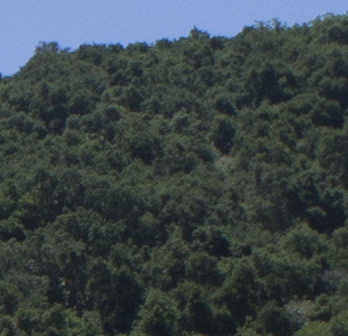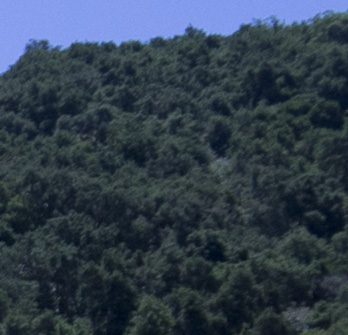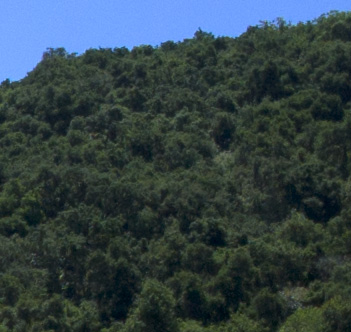I did some lens testing this week:
- The Sony 16mm f/2.8 on the NEX-5
- The 16-18-21 Tri-Elmar on the NEX-5
- The 18mm f/3.8 Super Elmar-M on the NEX-5
and, just for completeness:
- The 16-18-21 Tri-Elmar on the M9
- The 18mm f/3.8 Super Elmar-M on the M9
It wasn’t very formal, but was enough for me to draw some conclusions:
- Amazingly, the little 16mm Sony lens is about as good on the NEX-5 as the Tri-Elmar when that lens is set to 16 mm.
- The 18mm f/3.8 Super Elmar-M is an amazing lens, and does a great job on the NEX-5.
- The lack of an antialiasing filter on the M9 makes for sharper images than on the NEX-5 when viewed one-pixel-to-one-pixel. With the Tri-Elmar, the differences are more subtle than with the sharper Super Elmar-M. The differences in pixel to pixel sharpness are swamped by the big advantage of the M9 in that regard: it just has more pixels.
Below are some examples of one of my test scenes. All exposures were made at f/4 at the lowest sensitivity supported by the camera body (ISO 160 for the M9, and ISO 200 for the NEX-5). All the examples below are at full resolution: one (demosaiced) pixel in the camera is one pixel on the screen. This presentation favors the Sony body over the M9, since the M9 images have more pixels.
There are some differences in image scale that are caused by the different pixel pitch in the two cameras: the M9 at 6.8 micron, and the NEX-5 with a little over 5 micron pitch. These differences favor the M9, since the NEX-5 images are effectively magnified more.
The part of the image presented is most of the way to the upper-right corner on the NEX-5, and the equivalent angle away from the lens axis (but not as close to the corner of the larger sensor) on the M9. To see the differences, download the images and view them at 2:1 or 4:1.
I have made no attempt to change the color cast introduced by the lenses. The Sony lens on the Sony body produce fairly accurate color rendering, as do Leica lenses on Leica bodies. However Leica lenses on the Sony body produce an overall blue cast.
The Sony 16mm f/2.8 on the NEX-5
The 16-18-21 Tri-Elmar on the NEX-5
The 18mm f/3.8 Super Elmar-M on the NEX-5
The 16-18-21 Tri-Elmar on the M9 (at 18mm)
The 18mm f/3.8 Super Elmar-M on the M9





Leave a Reply